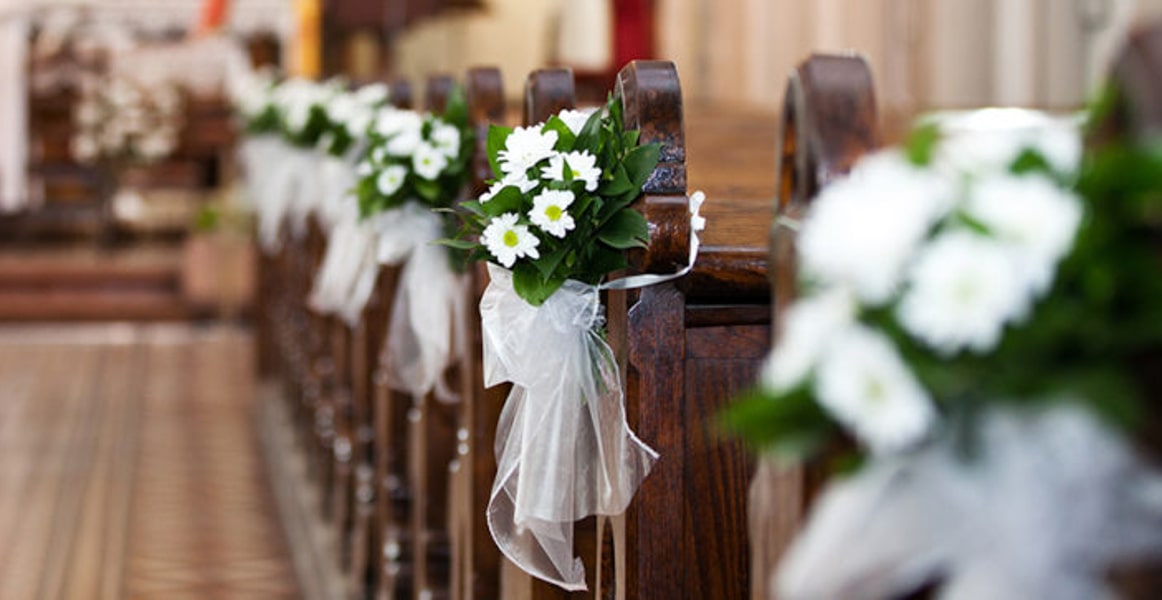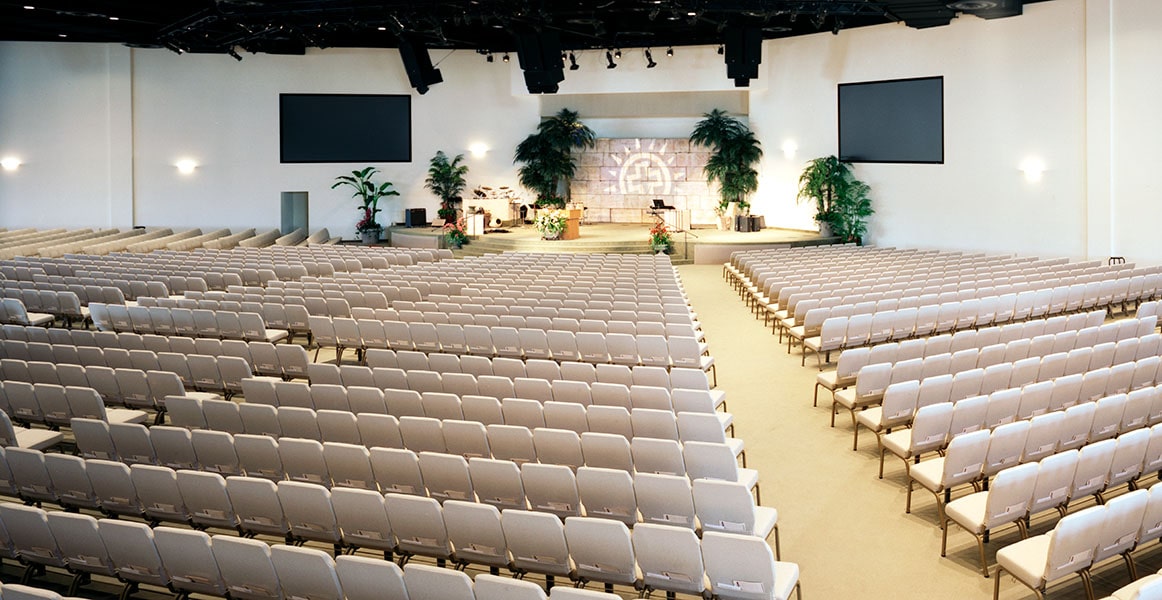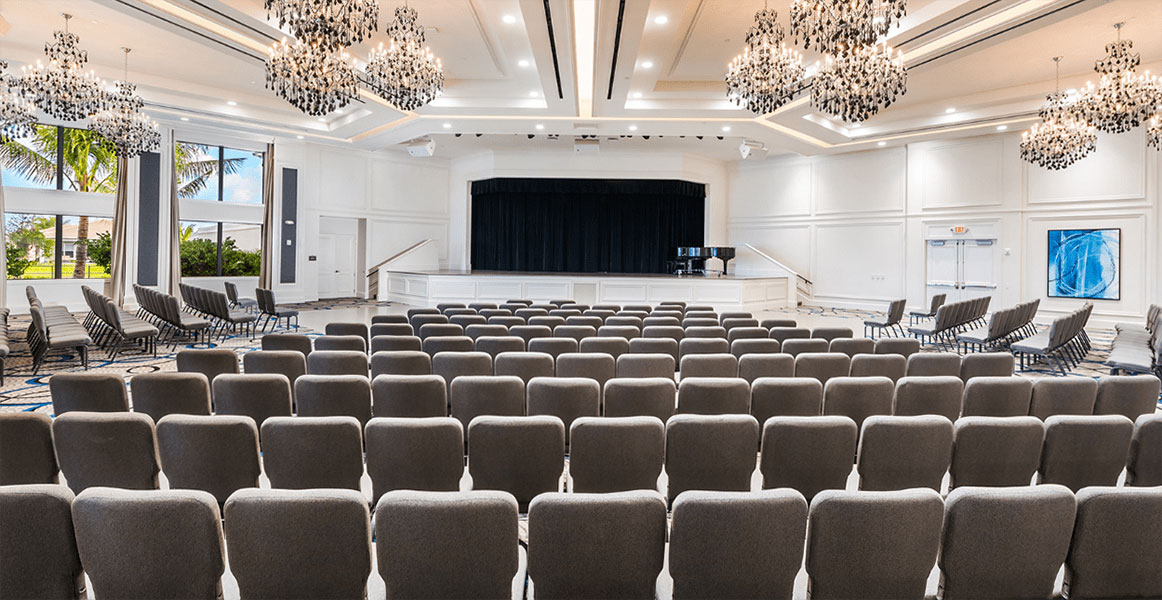Sitztipps: Die Dos und Don'ts für die Sitzplätze von Hochzeitsgästen
Bei der Hochzeitsplanung gibt es viele Regeln, aber nur wenige sind unumstößlich. Während viele Hochzeitstraditionen auf der Strecke geblieben sind, gibt es einige grundlegende Dinge, die sich als wichtige Überlegungen herausgestellt haben. Andere sind überholt und sollten vermieden werden.
Sitzplätze ausschließlich nach Familie: Nein
Es gibt eine alte Regel, wonach die Familie und Freunde der Braut auf der einen Seite der Kirche (und auf der anderen Seite des Raumes beim Hochzeitsessen) und die Familie und Freunde des Bräutigams auf der anderen Seite sitzen. Dies kann jedoch zu einer unausgewogenen Sitzordnung führen und dazu, dass geschiedene Familienmitglieder unangenehm nahe beieinander sitzen. Auch bei gleichgeschlechtlichen Hochzeiten kann es zu Drama und Verwirrung kommen.
Glücklicherweise kommt die strikte Sitzordnung nach Familienregeln bei der Hochzeitsplanung immer mehr aus der Mode. So kann jede Hochzeitsgesellschaft ihre Sitzplatzwünsche individuell an ihre Situation anpassen.
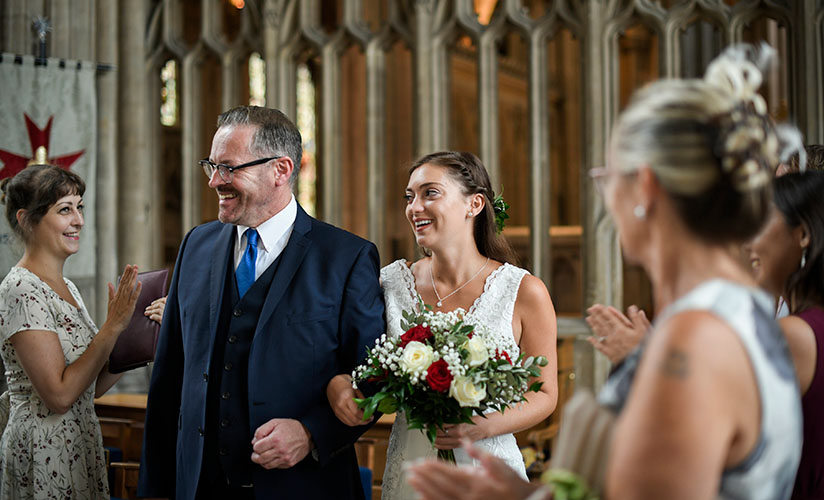
Gute Aussicht für alle: Ja
Egal, ob die Hochzeit drinnen oder draußen stattfindet, ist es wichtig, dass jeder freie Sicht hat. Die Stühle sollten nach vorne oder dorthin zeigen, wo das Paar stehen wird. Achten Sie darauf, dass die Sitzplätze der Gäste sorgfältig platziert werden, um mögliche Hindernisse wie Säulen oder Dekorationen zu vermeiden, und dass die Beleuchtung ausreichend ist, damit alle Gäste gut sehen können.
Lassen Sie ausreichend Platz für Rollstühle und andere Mobilitätshilfen und stellen Sie sicher, dass die Rollstuhlplätze eine gute Sicht bieten.
Reservierte Sitzplätze für die Hochzeitsgesellschaft: Ja
Eine Tradition, die ihre Popularität nicht verloren hat, ist die Reservierung von Sitzplätzen im vorderen Teil des Raumes für enge Familienmitglieder oder andere Ehrengäste. Eltern, Geschwister, Großeltern, Tanten, Onkel, Cousins, Stiefverwandte und andere enge Freunde und Familienmitglieder sitzen in den ersten beiden Reihen der Kirche (oder bei Bedarf auch in mehr).
Brautjungfern, Trauzeugen und andere Mitglieder der Hochzeitsgesellschaft sitzen ebenfalls weiter vorne oder bleiben manchmal während der Zeremonie stehen. Die individuelle Familiendynamik sollte Vorrang vor der Tradition haben (zum Beispiel können geschiedene Eltern in anderen Reihen sitzen, wenn das für sie angenehmer ist).
Viele Leute schmücken die ersten beiden Reihen mit Blumen oder Bändern, um sie als reserviert zu kennzeichnen. Das ist wichtig, da einige Hochzeitsgäste zusammen mit der Braut oder dem Bräutigam hereinkommen und einen reservierten Platz benötigen. Andere Hochzeitsgäste sitzen hinter den reservierten Reihen.

Alle Einzelgäste zusammensetzen: Nein
Wenn Sie einen Sitzplan für den Hochzeitsempfang oder das Hochzeitsessen erstellen, berücksichtigen Sie, dass einige Gäste Paare und andere Singles sein werden. Es mag einfacher erscheinen, alle Paare an einen gemeinsamen Tisch zu setzen und alle Singles an einen. Sitzpläne, die die Gäste jedoch nach Familienstand aufteilen, verstoßen gegen die guten Sitten. Sie können die Aufmerksamkeit auf den Beziehungsstatus Ihrer Singles lenken. Mischen Sie Singles und Paare in Ihrem Hochzeitsplan, um eine inklusivere Atmosphäre zu schaffen.
Haupttisch: Ja
Bei Hochzeitsessen gelten im Allgemeinen dieselben Sitzordnungen wie bei der Zeremonie. Die Hochzeitsgesellschaft, die engsten Familienmitglieder und die Ehrengäste sitzen dem Paar am nächsten, oft an einem Haupttisch. An runden Tischen finden normalerweise nicht mehr als acht Gäste Platz, daher wird manchmal ein langer rechteckiger Tisch (bestehend aus mehreren Tischen, die aneinandergereiht sind) verwendet. Da das Format eines langen Tisches jedoch nicht viel Unterhaltung zwischen den Gästen zulässt, sind auch traditionelle runde Tische beliebt, wobei man sich darüber im Klaren ist, dass nicht jeder am Tisch des Brautpaares sitzen kann.
Verwenden Sie eine Sitzplan-App
Einen Sitzplan für Hochzeitsgäste zu erstellen, kann eine Herausforderung sein. Als kirchliche Trauungsorganisation werden Sie möglicherweise von den Familien des Brautpaares gefragt, wie Sie am besten einen Sitzplan für die Hochzeit erstellen. Hier sind drei Online-Ressourcen, die Sie empfehlen oder selbst nutzen können, um einen Sitzplan für kirchliche Trauungen und Hochzeitsessen zu erstellen.
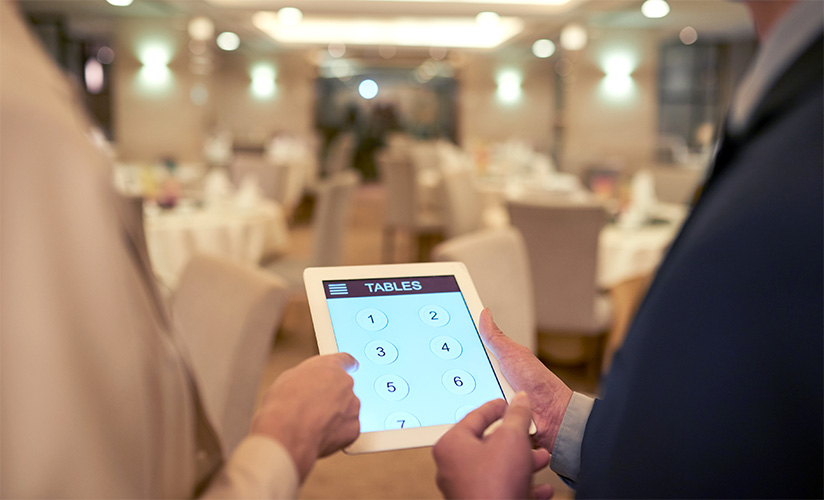
1. Alle sitzen
Mit Alle Sitzenden, können Sie bei der Hochzeitsplanung gemeinsam mit anderen einen detaillierten Grundriss erstellen. Die Website ermöglicht eine 3D-Ansicht mit verschiedenen Vorlagen zur Auswahl. Bei Bedarf steht Ihnen unser Kundenservice rund um die Uhr zur Verfügung.
2. TopTablePlanner
TopTischPlanner ermöglicht es Ihnen, Tische zu verschieben, Gäste hinzuzufügen und Dekorationen anzuordnen, um Ihre Veranstaltung zu planen. Sie können sogar Dateien aus Word und Excel importieren. Sie können die Site mit einer 7-tägigen kostenlosen Testversion testen – Geld-zurück-Garantie.
3. Martha Stewart Hochzeiten
Wenn Sie für die Planung einer Hochzeit tolle Tipps zur traditionellen Sitzordnung in der Kirche suchen, Martha Stewart Hochzeiten ist die richtige Website für Sie. Die Site enthält viele Artikel über die perfekte Sitzordnung und andere hilfreiche Artikel über traditionelle kirchliche Hochzeiten. Diese Site bietet sogar die richtigen Prozessionsabläufe und Stehformationen.
Stuhlanordnungen für die Hochzeitszeremonie
Bei der Planung einer kirchlichen Trauung spielt die Anordnung der Stühle eine entscheidende Rolle für ein bedeutungsvolles und unvergessliches Erlebnis. Während in vielen Kirchen traditionelle Kirchenbänke üblich sind, bieten Veranstaltungsorte mit Einzelstühlen den einzigartigen Vorteil, die Sitzordnung an die Wünsche des Paares und den Ablauf der Zeremonie anpassen zu können.
Eine klassische Variante ist die Mittelganganordnung, bei der die Stuhlreihen auf beiden Seiten eines Mittelgangs angeordnet sind. Diese zeitlose Anordnung bietet einen dramatischen Auftritt für Braut und Bräutigam und eignet sich ideal für Prozessionen und Fotoaufnahmen. Wenn es der Platz erlaubt, entscheiden sich manche Kirchen für sanft geschwungene Reihen, um eine intimere Atmosphäre zu schaffen. So fühlen sich die Gäste dem Paar näher und die Sicht während der Zeremonie verbessert sich.
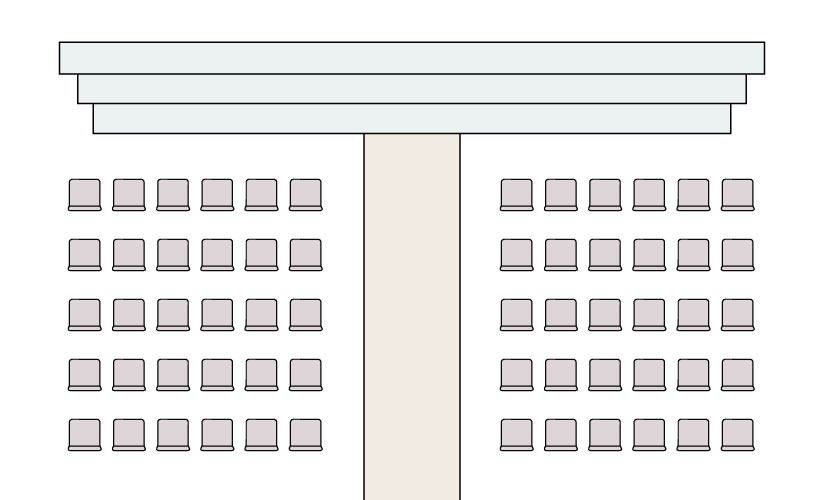
Für einen moderneren oder persönlicheren Ansatz können Paare eine Halbkreis- oder Bogenanordnung wählen, bei der die Gäste in einem umfassenderen Rahmen um das Paar herum angeordnet sind. Diese Anordnung fördert das Gemeinschaftsgefühl und lenkt den Fokus auf den Altar oder den Zeremonienraum. Bei kleineren Hochzeiten ermöglicht eine U- oder Hufeisenanordnung engen Familienmitgliedern und Freunden, sich direkt einbezogen zu fühlen, während gleichzeitig ein klarer Mittelpunkt im Zentrum erhalten bleibt.
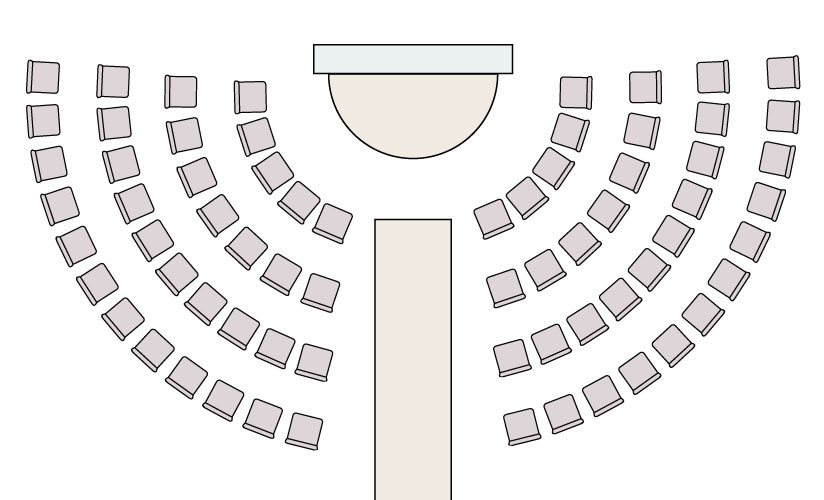
Unabhängig von der Anordnung ist es wichtig, ausreichend Platz zwischen den Reihen zu lassen, um Komfort und Zugänglichkeit zu gewährleisten, insbesondere für ältere Gäste oder Personen mit Mobilitätseinschränkungen. Auch gut konstruierte, bequeme Stühle sind von Vorteil – Hochzeiten können lange dauern, und die Gäste werden die Unterstützung zu schätzen wissen. Die richtige Anordnung vereint Schönheit, Funktionalität und ein Gefühl heiliger Feierlichkeit und verleiht der Zeremonie ein besonderes und harmonisches Gefühl.
Arten von Hochzeitsstühlen
Bei einer kirchlichen Trauung ohne traditionelle Kirchenbänke kann die Wahl der Stühle die Atmosphäre und den Komfort der Gäste maßgeblich beeinflussen. Glücklicherweise gibt es mehrere elegante und praktische Stuhloptionen, die zum kirchlichen Rahmen passen und gleichzeitig die Ästhetik der Zeremonie unterstreichen.
Es stehen viele Stuhlstile zur Auswahl, von formellen Stilen bis hin zu bequeme Polsterstühle. Bei der Wahl des richtigen Stuhls für Ihre kirchliche Trauung geht es um mehr als nur das Aussehen – es geht auch darum, sicherzustellen, dass sich die Gäste willkommen und wohl fühlen und Teil eines heiligen Moments sind.
